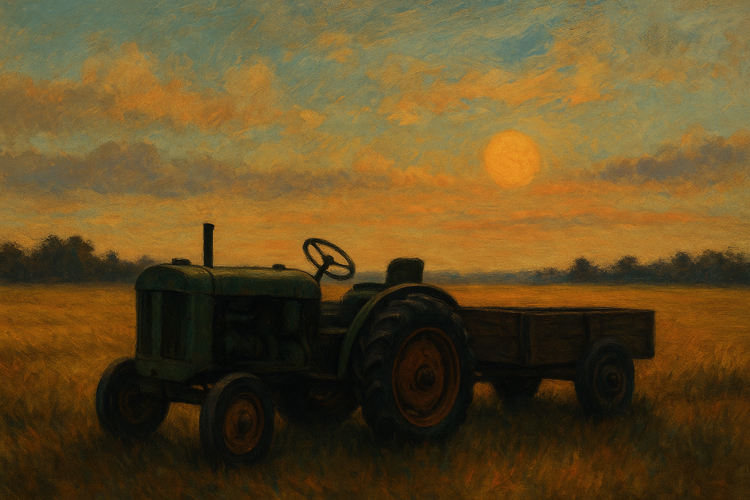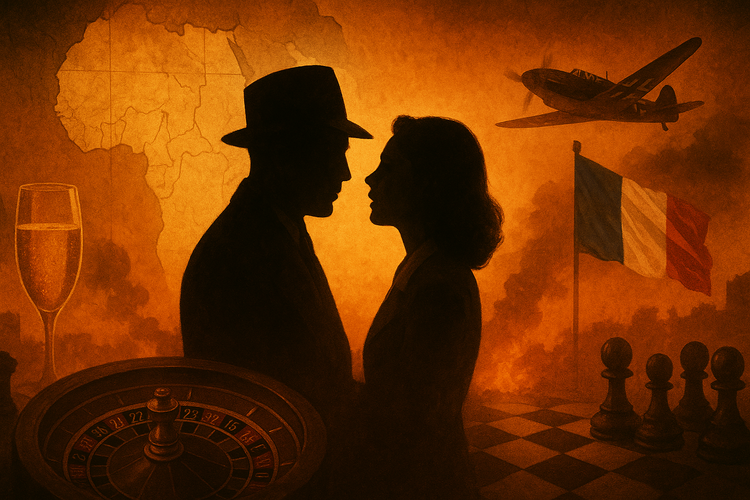Mad Max: Fury Road (2015): Dust, Fire, and the Shape of Survival

Survival in the Wasteland
Mad Max: Fury Road (2015) begins not with grandeur but with hunger. Max, ragged and alone, snatches up a two-headed lizard and devours it raw, a figure reduced to instinct and haunted by ghosts of those he failed. From the outset George Miller insists this is a story stripped to the bone: survival as image, movement as philosophy. Yet for all its grime and mania, Fury Road has been canonized by critics in the years since its release, appearing not only on “best of the decade” lists but enshrined in polls of the greatest films ever made. Whether it truly belongs in that company is a more complicated question. Some of its reputation rests on sheer sensory impact, on the audacity of its practical effects and relentless velocity. But its deeper claim — what elevates it beyond being merely the loudest chase in cinema history — lies in how it reimagines myth, redemption, and revolution in motion.
The Machinery of Motion
What distinguishes Fury Road is not simply its premise — a chase across a desert, an escape turned into pursuit — but the absolute commitment to velocity as language. Miller and his team built the vehicles, hurled them into storms of dust, and let real bodies leap, crash, and burn. Every war rig, bike, and spiked death machine is both prop and character, stitched together from scraps of a ruined world. The war boys shout “witness me” before igniting themselves, their deaths staged not as background mayhem but as ritual sacrifice. In another register, the sight of a guitarist suspended on bungee cords, spewing fire while the caravan hurtles into a sandstorm, would be parody; here it feels like opera. The miracle is that the film never loses its bearings. Cuts are precise, spatial continuity preserved even in delirium, so that the audience never feels abandoned in noise. Movement is the grammar, speed the punctuation, combustion the exclamation mark. Where most modern blockbusters dissolve into incoherence — a blur of pixels and weightless destruction — Fury Road is a masterclass in how to make chaos sing. On that measure alone, it earns its laurels: not just another revival of a franchise, but a work that reframed action itself as cinematic poetry, written in dust and fire.
Embodied Performances
If the vehicles are characters, the actors become their counterweights — less speakers of dialogue than carriers of myth. Tom Hardy’s Max spends much of the film muzzled, his performance relying on eyes that flicker between haunted memory and brute calculation. He is more witness than protagonist, a man dragged back into the orbit of others’ struggle. By contrast, Charlize Theron’s Furiosa burns with a clarity that gives the film its spine. She is not a sidekick but the true center: her stolen wives, her search for redemption, her recognition that the “green place” no longer exists. Theron grounds the mania in human stakes, her shorn head and oil-streaked face as iconic as any superhero’s cape. Around them orbit grotesques and zealots — Hugh Keays-Byrne’s Immortan Joe with his plastic armor and grotesque breathing mask, Nicholas Hoult’s Nux evolving from fanatic to ally, the wives shifting from objects of possession to agents of survival. Dialogue may be scarce, but the physical commitment of these performances — the way Hoult clings to the rig, the way Theron staggers bleeding but unbowed — supplies the story with texture. In a film defined by metal and fire, the bodies carry equal weight, reminding us that even myth needs actors to bleed for it.
Redemption and Revolution
Beneath the shrieking engines and firestorms, Fury Road is less about escape than about broken people searching for redemption. Furiosa’s flight is not simply rebellion against Immortan Joe but an attempt to restore something she lost — the green place of her childhood, the community she was torn from. When that dream collapses into dust and crow-haunted marsh, the quest shifts: redemption will not come from fleeing further into desolation but from turning back, seizing the citadel itself. Max, haunted by voices of the dead, begins as a man reduced to survival instinct — “hope is a mistake,” he mutters — yet he finds himself bound to Furiosa’s cause. Their alliance is forged not in trust but in necessity, then deepened by sacrifice: her entrusting him with the war rig’s ignition sequence, his wordless decision to tether his own blood to her failing body. Even Nux, the war boy fanatic, arcs toward a different kind of glory — not Valhalla but a final act of protection. In all of them, the film reframes survival from individual instinct to collective revolt. Redemption is not flight into fantasy; it is the hard, bloody work of reclaiming a poisoned home.
The world of Fury Road is drenched in allegory as much as dust. Immortan Joe presides like a grotesque prophet, dispensing water in bursts that keep his people desperate, baptizing them in scarcity while hoarding abundance behind closed gates. His cult is built on steering wheels treated as sacred relics, on half-life boys painted white to mimic corpses, on the promise that to die in his service is to live again. Against this false messianism stand Furiosa and the wives, women stripped of agency and reduced to “breeders,” yet insisting on a different future. Their flight is less about escape than about reclaiming their bodies and destinies, carrying seeds of renewal in both literal and figurative sense. In staging this revolt, Miller folds action spectacle into myth: the chase becomes an exodus, the citadel a promised land, redemption not in wandering forever but in overthrowing the tyrant. That the revolution succeeds through sacrifice — Nux’s final swerve, Furiosa’s near-death, Max’s anonymous departure — gives the myth its cost. Fury Road may move like chaos, but its shape is closer to scripture: bondage, escape, wilderness, return, deliverance.
Flaws and Risks
Yet the very excess that makes Fury Road so bracing also courts unease. Miller does not shy from imagery that feels invasive, bodies pressed into functions better left unseen, rituals that hover somewhere between parody and nightmare. At times the film seems to revel in its own extremity, lingering on inventions that some will find more grotesque than illuminating. For admirers, these moments sharpen the allegory, showing how power degrades both body and spirit. For others, they risk breaking the spell, tilting the spectacle toward repulsion. It is a reminder that the film’s grandeur is inseparable from its harshness; the same commitment to extremity that gives it force also narrows its welcome.
The other risk is skeletal simplicity. Strip away the firestorms and operatic score, and the narrative is little more than a chase that turns back on itself: run from the citadel, find no refuge, return to the citadel. Its power lies in how Miller orchestrates that loop, but the simplicity leaves little room for nuance of character or dialogue. Max remains more cipher than man, his haunted visions sketched but never deepened. The wives, though granted moments of agency, sometimes read more as archetypes than as individuals. Even Furiosa’s redemption, while compelling, arrives through gesture more than exploration. For some viewers, this minimalism is the point — a return to mythic storytelling, action as fable. For others, it is proof that the film’s elevation rests more on spectacle than substance, a triumph of form over the kind of layered character work that anchors many canonical “greatest films.”
Verdict
In the end, Fury Road circles back to the same question posed in its opening image: is survival enough? Max devours the lizard because instinct demands it; by the film’s close, survival has widened into something more communal — Furiosa returned in triumph, the citadel’s gates opening, water pouring for those who had been denied. Whether this journey deserves to sit among the greatest films of all time depends on what one means by greatness. If greatness lies in layered narrative and psychological depth, Miller’s film may feel too skeletal, its world a howl more than a conversation. But if greatness can also be measured by form — by a work that redefines how action is staged, how myth can be carved from dust and fire — then Fury Road earns its place. It is not flawless, but it is undeniable, a film that reminds us that even in the age of digital excess, cinema can still thunder with the force of invention. Strongly recommended; four stars.



Comments ()